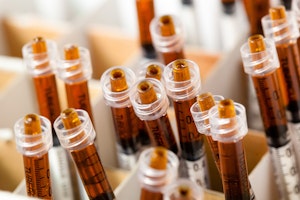
Photo by Cottonbro / Pexles
Water-Soluble Vs. Fat-Soluble Edibles: Which Is Best?
Breaking down which edibles are best for your desired experience.
Many experienced cannabis users often find their relief in edibles, known to kick in within about 30 minutes to one hour or even up to two hours. But why do edibles take so long to kick in versus smoking, and are there edibles on the market that produce effects faster? Keep reading for the full rundown.
Water-Soluble Drops

Photo courtesy of Binoid
Tinctures are extracts in the form of water-soluble drops. This characteristic makes tinctures easy to absorb by your body, so their effects kick in quickly.
You only need to add a few drops to your food or drinks to use it. Or, you can apply it under your tongue for fast absorption. Besides, they are mostly odorless, so it is a versatile and discreet way of using cannabinoids.
A great example of these edibles is the Water-soluble drops by Binoid. They contain broad-spectrum CBD and organic essential oils to add some flavor and extra therapeutical properties.
You can find them in orange, peppermint, lemon, vanilla, and ginger flavors. They are great to soothe pain, relax your body and reduce anxiety or stress. Some of them are especially helpful for falling asleep easily or boosting your immune system. You can find them all at Binoid.
Fat-Soluble Edibles

Photo by
Markus Spiske / Pexels
Most edibles on the market are made with fat–soluble cannabinoids. In fact, all cannabinoids are fat–soluble, meaning they don’t mix well with water and cause some unwanted substance separation.
This is why your go-to brownie from the dispensary down the road takes so long to kick in because anything fat–soluble travels through the digestive tract and slowly gets absorbed when it’s broken down.
So that familiar edible hit you feel about an hour after eating a brownie directly results from the lengthy digestive process and breaking down fat–soluble cannabinoids.
Water-Soluble Edibles

Photo by Toni Cuenca / Pexels
Scientists and cannabis researchers have made breakthrough findings in recent years by transforming cannabinoids like THC and CBD into water–soluble compounds by using certain methods like nanoemulsions and microemulsion-stable homogeneous mixtures, notes Canna Digger.
So what happens when cannabinoids are water–soluble? Similar to drinking booze that directly moves into the bloodstream, cannabis-infused beverages made with nanoemulsions have the same effect.
Most nanoemulsions and water–soluble edibles come in the form of beverages, considering the easiest way to introduce a water-based product is through a formulation that’s also water-based. However, certain companies have launched nanoemulsion gummies and chewable edibles, and we should only expect to see more as their demand grows.
Which Is Best?

Photo by Karolina Grabowska / Pexels
Determining which edible method is best is solely based on your preferred experience. There are no differences in effects between fat–soluble and water–soluble edibles, both contain cannabinoids, and both will do the job.
However, if you’re looking for a product that will kick in faster than typical edibles, opt for a beverage or sublingual. You can snag a chewable nanoemulsion edible, but they’re a little harder to find, considering it’s a new technology that some companies are still rolling out.
A sublingual product, like a tincture, is another great way to feel a faster onset of effects. These tinctures can be dropped under the tongue, and because they’re water–soluble, the mucous membranes in the mouth quickly absorb all cannabinoids and send them through the bloodstream, which usually produces effects in under 15 minutes.
Herb Recommended Products:
READ MORE











